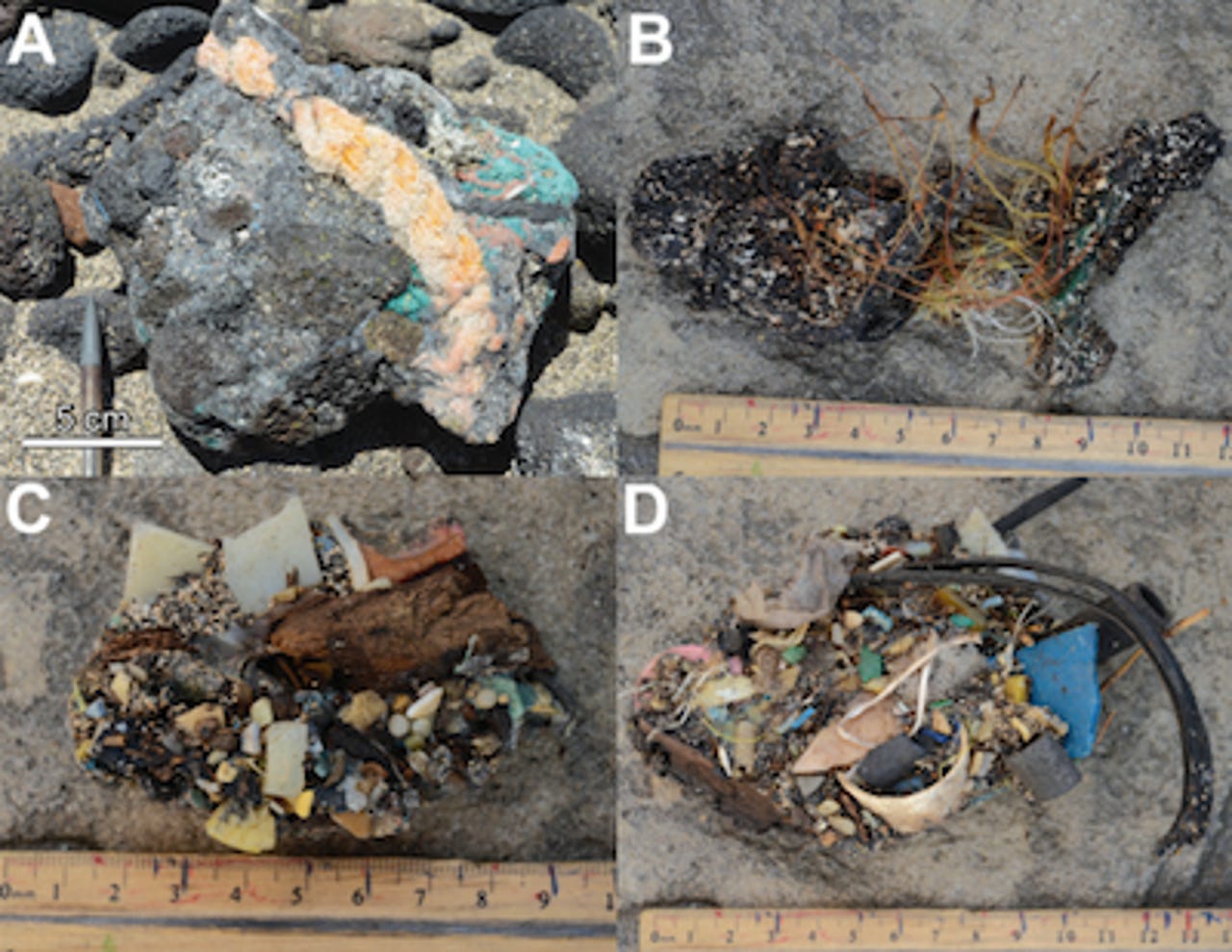Researchers discover rocks made of plastic


Plastics only started appearing in the 1950s, with production and disposal rates increasing steadily over the last 60 years. With crazy low recovery rates, plastic debris is accumulating in our waterways and along shorelines in massive quantities.
Now, researchers working in Kamilo Beach on the southeastern tip of the Big Island of Hawaii report a new stone formed through the intermingling of melted plastic, beach sand, basaltic lava fragments, and organic debris like seashells. They call it "plastiglomerate."
When scientists unearth an ichthyosaur, for example, they can narrow down the fossil's age based on the sediment layer it was found in -- say, the Early Cretaceous, a particularly chalky time. Similarly, this newly discovered plastiglomerate forms a marker horizon of human pollution, signaling the occurrence of the Anthropocene. This informal epoch includes the latter half of the 18th century through the present.
The plastiglomerate likely formed from melting plastic in campfires, although anywhere there's a heat source (such as forest fires or lava flows) and abundant plastic debris, "there is the potential for the formation of plastiglomerate," Patricia Corcoran of the University of Western Ontario tells Science.
They divided plastiglomerate into two types: in situ and clastic. When plastic melts, it can flow into larger rocks and adhere to outcrops -- that's in situ. The clastic type (pictured above) cements a combination of basalt, coral, shells, and local woody debris with grains of sand in a plastic matrix. In some cases, the researchers were able to identify distinct types of molten plastic: netting and ropes, packaging, lids, tubes and pipes, and confetti (colorful, brittle remains of products like food and drink containers). Science explains:
Once the plastic has fused to denser materials, like rock and coral, it sinks to the sea floor, and the chances it will become buried and preserved in the geologic record increase.
Being located within the North Pacific subtropical gyre, the Hawaiian Islands are especially vulnerable to becoming sinks for plastic debris. Plastiglomerate was littered along all of the 21 sites they surveyed at Kamilo Beach, and it's already been seen on another Hawaiian island. Corcoran expects there to be much more on coastlines across the world and that they'll be noticed more from now on.
"One day in the future, people can look at this material and use it as a marker horizon to see that in around 2010, humans were polluting the planet with plastic," Corcoran tells LiveScience. "But that's not a legacy we really want."
The work was published in GSA Today.
[Via Science]
Image: Corcoran, P.L. et al.
This post was originally published on Smartplanet.com